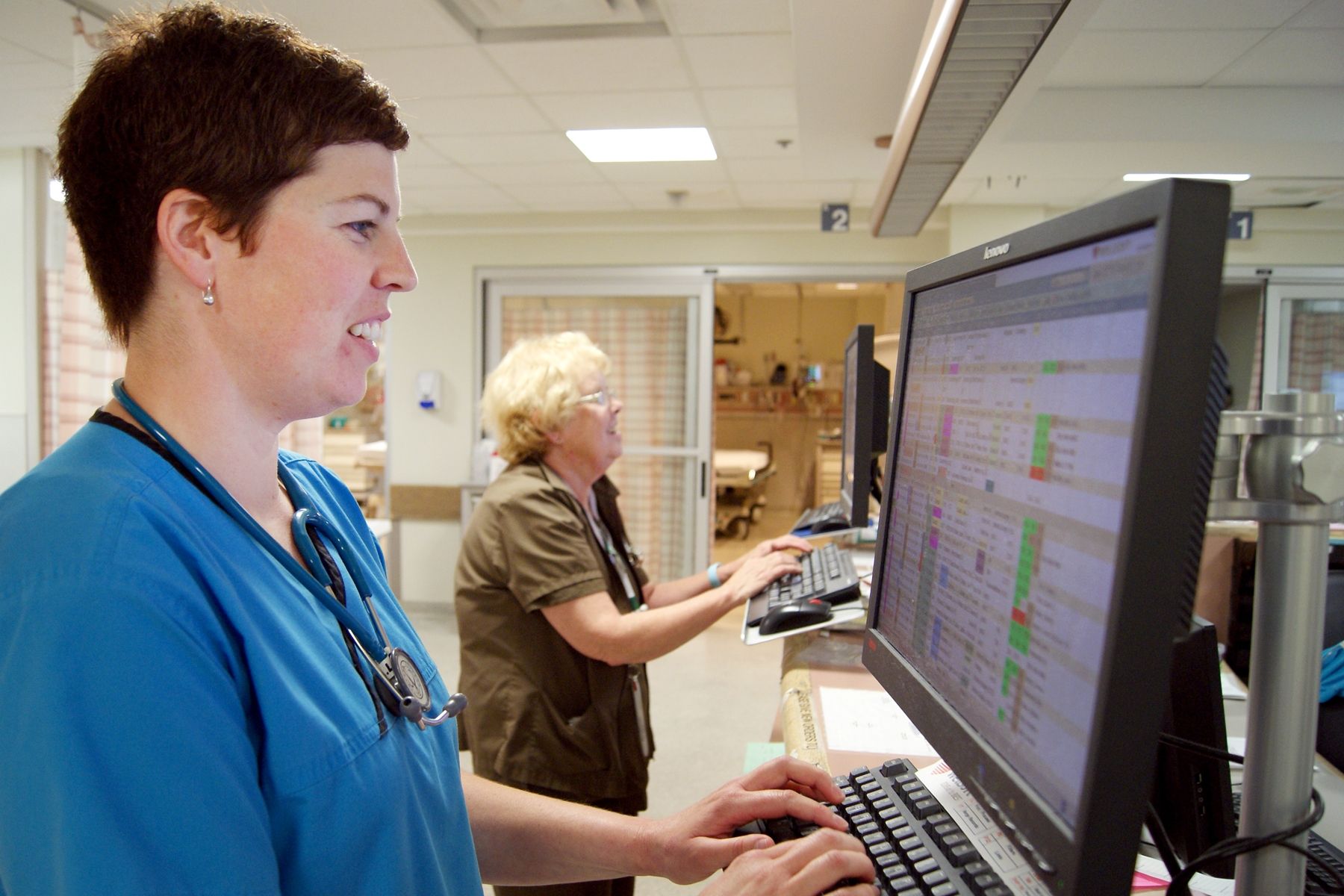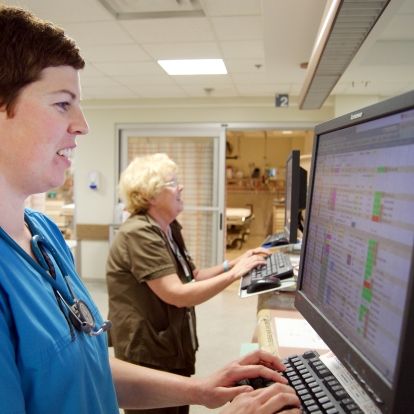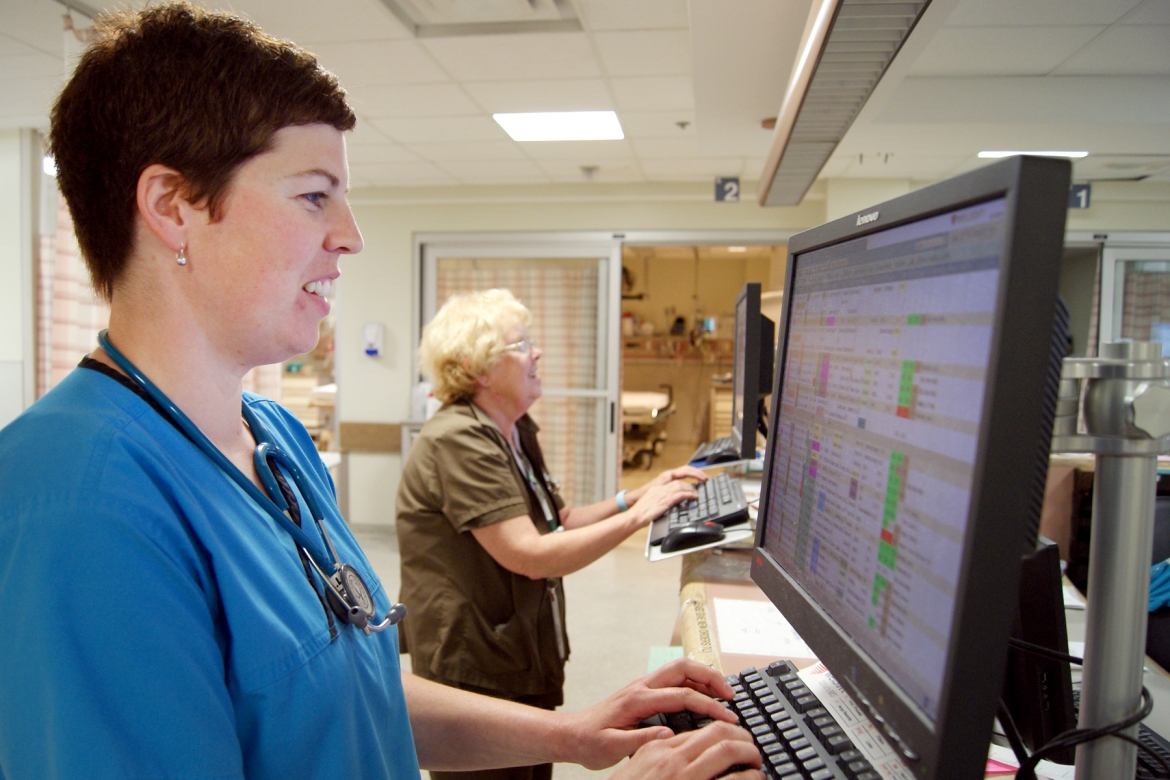Effective immediately masking is required for everyone when present on all inpatient units, in the Emergency Department (ED), the Urgent Care Centre (UCC), and the Children’s Outpatient Centre (COPC).

More and more, people are putting aside the pens and paper in our emergency department to jump onto nearby computer terminals instead. Phase two of the Emergency Department Information System, or EDIS, has just gone live at Kingston General Hospital and at Hotel Dieu Hospital.
Now, nurses, respiratory therapists and patient care assistants are charting electronically.
“Anything they do to, or for, the patient is now entered into EDIS at a terminal,” says EDIS Project Manager Cindy Bolton. “This process creates a legible, complete patient care document and that contributes to safer care.”
Take the routine act of drawing blood as an example. Before this phase of EDIS, nurses had to hunt around for the patient's chart and then write out by hand the details of what happened.
Now, they fill out a template in the program that walks them through a list of standardized questions, such as which wrist was the blood drawn from and how many attempts were involved. The same process goes for all the other procedures, such as administering oxygen therapy or starting an IV.
“It's great to be able to walk up to a computer and have the patient's chart right there ready to go,” says Registered Nurse Sarah Loucks. “It's often so busy here that finding the necessary chart quickly could be a big challenge. This is saving precious time.”
Staff and physicians in other parts of the hospital are also benefitting from the new system. If the patient is admitted, the comprehensive and easy-to-read document goes with them to the inpatient floors.
It is later scanned into the Patient Care System and can also be sent along to another hospital if necessary.
The first phase of EDIS went live here and at HDH's Urgent Care Centre back in March of 2011. Its launch was all about creating and perfecting a tracking screen that allows staff to electronically follow patients through their departments. A quick glance at the colour-coded screen today reveals how many patients are in the department, where they are and what kind of care they are receiving.
For phase two, the EDIS software needed to be customized to meet KGH and provincial nursing requirements. Loucks and Alana Wilson, an RN from Hotel Dieu, and several KGH RTs took on the task of designing and standardizing the many necessary templates.
“We have young nurses here mixed with others who have been working for over 30 years,” says Loucks. “We had to make sure this was a tool that was up to standard but was also one that everyone could use easily.”
A new approach to training also helped out with the implementation.
“This time we pulled clinical nurses out of their rotation and they taught their peers and they did a phenomenal job,” says Bolton.
“We also gave additional training to 20 super users who are now a resource on the floor to support their peers and pass on any feedback.”
Bolton says these lessons will come in handy in the rollout of future phases of electronic documentation at KGH. Physicians are scheduled to begin charting on the electronic system in the near future and after that Phase 3 will see clinicians doing order entry on the system."





